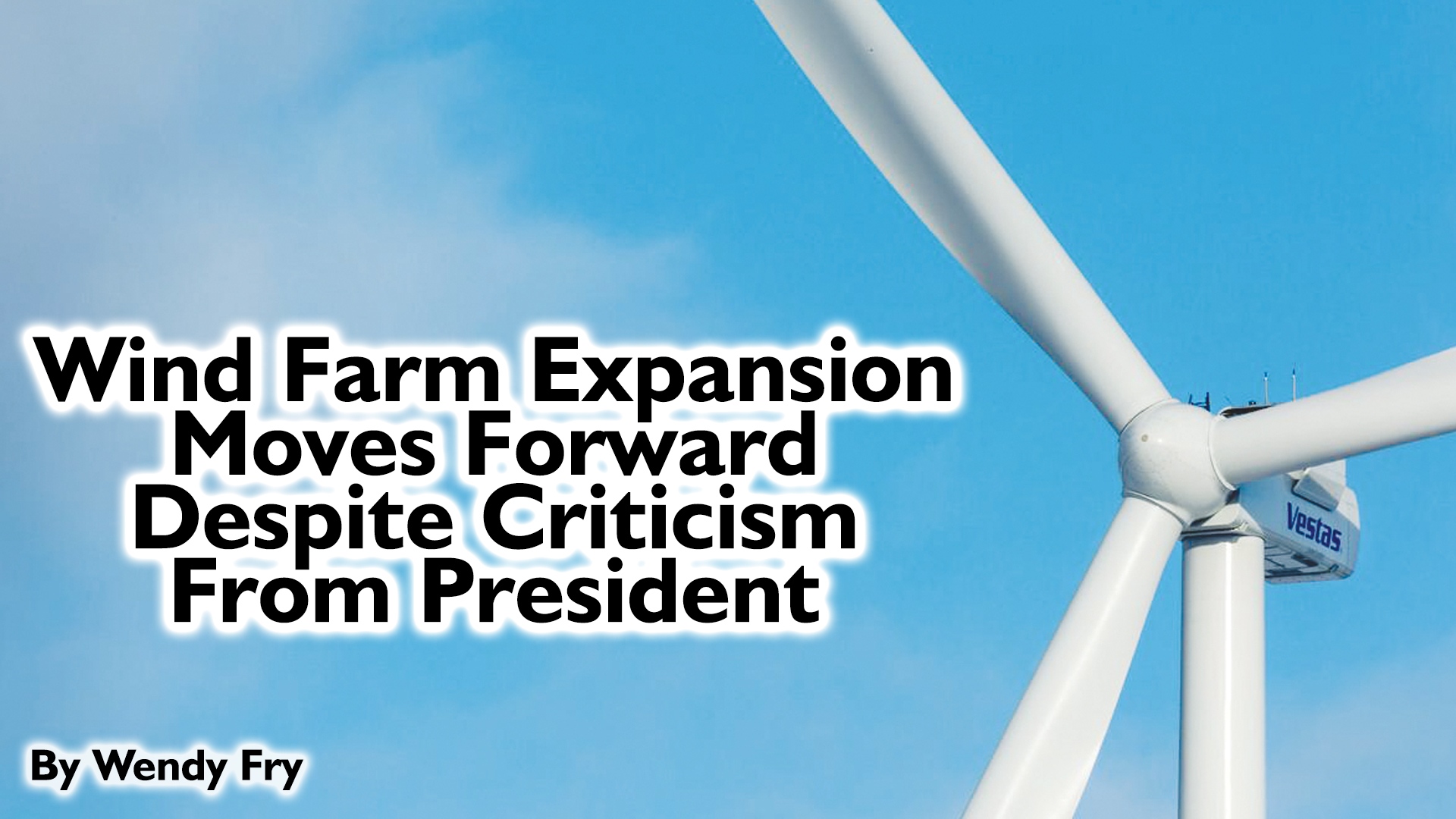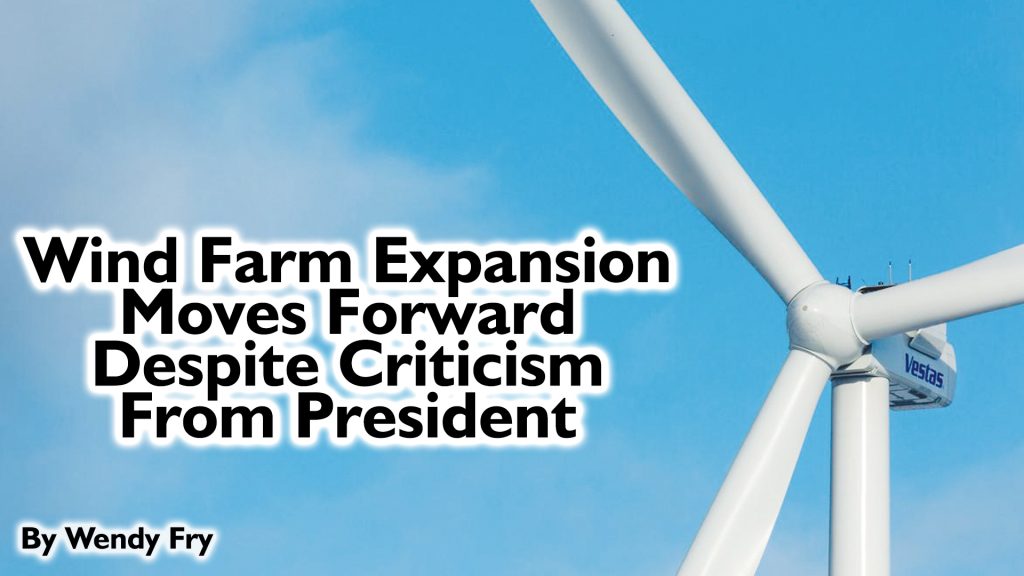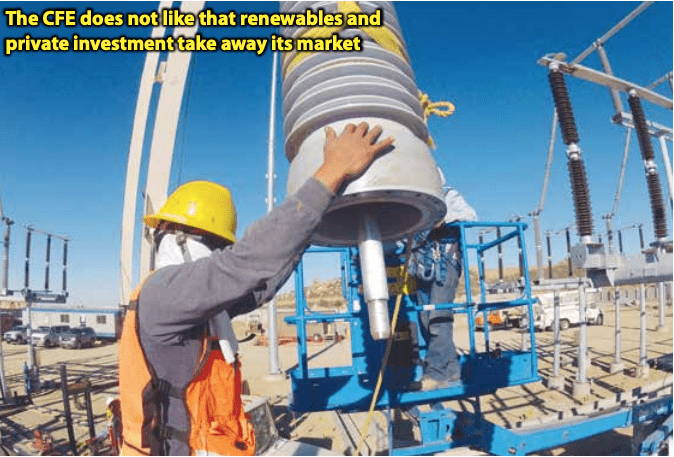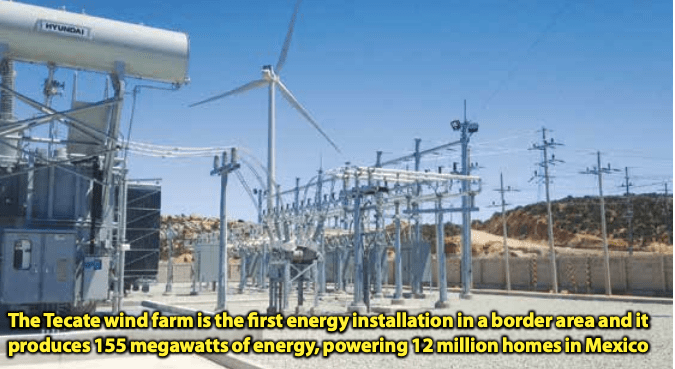Wind Farm Expansion Moves Forward Despite Criticism from President


By Wendy Fry
Developers say a project to build a second wind farm in Baja California’s Sierra Juarez mountain range is making progress, despite harsh criticism from Mexico’s president and tougher regulations on renewable energy.
The US$150 million project, slated to power San Diego homes, is facing big challenges at the dawn of the new trade deal between Mexico, the United States and Canada.
In recent months, President Andres Manuel Lopez Obrador is taking an increasingly hostile stance against renewable energy, and against foreign investment in the energy sector, in general. Frustration has been building among renewable energy investors in Mexico for months.
“I know the different industry organizations have had meetings with the government to discuss the situation and try to open communication channels, but honestly, I think this is going to take some time to resolve,” said IEnova CEO Tania Ortiz Mena in the company’s latest quarterly call. “Meanwhile, we do have to continue down the legal front where we have been successful with the results we have obtained so far.”
Some Canadian energy companies complained to the government of Canada that Mexico’s president is violating the brand-new trade agreement by failing to honor past contracts in the renewable energy sector. Canadian Prime Minister Justin Trudeau emphasized the importance of renewable energy infrastructure for climate change goals and economic growth in a phone call to Lopez Obrador in July.
Advocating for Mexico to play a bigger role in its own national energy policy and become more self-sufficient, Lopez Obrador said prior Mexican presidents skewed the market in favor of private energy investors, especially foreign investors, driving up the cost of energy for the public.
The president has sought to implement new regulations and renegotiate billions of dollars of energy contracts to favor regular energy plants run by the Mexican federal energy commission, while disadvantaging renewable power.
In April, the nation’s energy controller suspended the inspections that new solar and wind farms must undergo to begin operating.
–

Meanwhile, the expansion project for the Energia Sierra Juarez II wind power plant in Tecate continues to move forward, according to the company building it.
Vestas, a company that designs and installs wind turbines, said in February it would begin installing 26 new wind turbines there.
The project is the second phase of the wind farm already located in the La Rumorosa mountains, run by Energia Sierra Juárez, a company formed by IEnova, the Mexicanbased subsidiary of Sempra Energy Company.
Sempra is a San Diego-based energy services holding company with more than US$11 billion in annual revenue.
IEnova – its Mexican subsidiary – is one of the largest private companies in Mexico’s energy sector. Its partner on the project, Saavi Energia, is the third largest independent energy producer in the country.
On March 28, when COVID-19 was first shutting down businesses in Baja California, Lopez Obrador traveled through La Rumorosa where the first phase of the Energía Sierra Juarez wind farm is located.
In a video posted to social media, Lopez Obrador heavily criticized the wind farm as ugly, announcing that never again would Mexico issue similar permits to a project that so drastically harmed the environment.
“You have to respect nature. This is the heritage of humanity,” he said, adding that the wind turbines were “visual pollution.”
The president also said very little energy is produced at the wind farm and the project mostly benefits the energy companies.
“Here, that expresses the lack of sensitivity of the rulers,” the president said, complaining about past administrations that approved the project. “They licensed those fans to produce wind power but look at how the wind farm affects the natural image landscape. How dare they give permission to install these fans.”
The Tecate wind farm is the first energy installation in a border area and it produces 155 megawatts of energy, powering 12 million homes in Mexico, according to IEnova.
“This project reinforces our commitment to develop an energy infrastructure that promotes the growth and development of Mexico and continues to position us as one of the leading companies in clean energy generation in the country,” said Tania Ortiz, the CEO of IEnova, about the initiation of the second phase of the project in February.
Some of the energy generated by the second wind farm in Tecate would be delivered to San Diego County through an already built cross-border transmission line, constructed during the first phase, according to details of the financing deal.
Developers said the energy will be sold through a private energy purchase agreement to San Diego Gas & Electric, the wholly-owned utility of Sempra.
The second phase of the project was already under construction when new regulations from the Ministry of Energy (Sener) and the National Center for Energy Control were implemented. Those regulations are aimed at stopping solar power and wind plants, energy experts in Mexico say.
Specifically, an April 29 ruling stopped connections of new solar and wind projects to the electrical grid, effective May 5, citing the need to secure the reliability of electrical services during the COVID-19 pandemic.
–

“We are against the corruption, the looting and the lobbying that prevailed during the neo-liberal period in the electric sector,” said Lopez Obrador, insisting contracts for wind projects and other renewables led to very high electric energy prices for the people of Mexico. “All to give preference to private generation plants, especially foreign ones,” he added.
The new Sener regulations are also aimed at protecting the Federal Electricity Commission (CFE), the Mexican-owned agency in charge of controlling, generating, transmitting and commercializing electrical energy in the country, energy experts say.
“The CFE does not like that renewables and private investment take away its market,” explained Juan Carlos Belausteguigoitia, the director of the Energy Center at the Autonomous Technological Institute of Mexico (ITAM).
Belausteguigoitia said the new regulations could have the opposite impact than intended, actually driving the price of electricity up for Mexican residents.

Specifically, Mexico’s energy ministry published rules for the national grid that instruct its controller CENACE to choose security over “economic efficiency” when deciding which power to dispatch. Another order increases the amount of reserves all backup plants must maintain at all times. Both regulations disadvantage renewable power, energy experts said.
Lopez Obrador said he would go to court to defend his administration’s new rules limiting solar and wind farms, pointing to past corruption in the electric energy sector.
Representatives of Energia Sierra Juárez said the Tecate wind farm project, if finished, will increase the capacity of renewable energy resources, which will help supply clean energy and reduce future demand on fossil fuel-based energy production.
The project prevents the emission of greenhouse gases and other pollutants, according to the company’s certification and financing proposal.
The electricity generated by the second portion of the project is expected to cover the annual consumption of approximately 37,500 San Diego households.
The commissioning of the second wind farm is slated for the second half of 2021 and 20-year contract term.